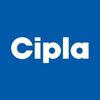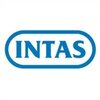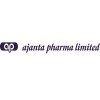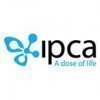
i
Zydus
Lifesciences
Filter interviews by
Zydus Lifesciences Apprentice Trainee Interview Questions and Answers
10 Interview questions
Parameters used in tablet manufacturing include formulation, compression force, tablet hardness, disintegration time, and friability.
Formulation - ingredients used in the tablet
Compression force - pressure applied during tablet compression
Tablet hardness - resistance to breaking
Disintegration time - time taken for tablet to break down in the body
Friability - tendency of tablet to break or crumble
CPP stands for Critical Process Parameters and CQA stands for Critical Quality Attributes of tablets.
CPP are the key variables that must be controlled to ensure the tablet manufacturing process is successful.
CQA are the characteristics that are critical to the quality of the tablet and must be monitored and controlled.
Examples of CPP include mixing time, compression force, and drying temperature.
Examples of CQA in...
Exhibit batches are used for stability studies and regulatory submissions, while PPQ batches are used for process validation.
Exhibit batches are manufactured for stability studies and regulatory submissions.
PPQ (Process Performance Qualification) batches are manufactured for process validation.
Exhibit batches are typically larger in size compared to PPQ batches.
Exhibit batches are used to demonstrate the product's...
Stratified sample analysis helps ensure representative sampling, while content uniformity test ensures consistency of active ingredients in a sample.
Stratified sample analysis involves dividing a population into subgroups based on certain characteristics before sampling.
Content uniformity test is used to ensure that the amount of active ingredient in each dosage unit is consistent.
Both techniques are important in ...
Disintegration test is a test performed on tablets to determine the time it takes for a tablet to break down into smaller particles.
Disintegration test helps to ensure that the tablet will disintegrate properly in the body for effective drug release.
The criteria for disintegration test vary depending on the type of tablet and the intended use.
Common criteria include the time it takes for the tablet to disintegrate...
LOD stands for Level of Detail. It refers to the amount of detail present in a model or visualization.
LOD is commonly used in computer graphics to optimize performance by displaying less detail when objects are far away.
It can also refer to the level of detail in data analysis, where different levels of granularity are used for different purposes.
For example, in a 3D video game, LOD may be used to switch between h...
Cleaning validation is the process of ensuring that a cleaning procedure effectively removes residues from equipment used in the manufacturing process.
Cleaning validation is essential in industries such as pharmaceuticals, food and beverage, and cosmetics.
It involves establishing documented evidence that the cleaning process consistently removes residues to predetermined levels.
Validation typically includes develo...
Film coating is a process in which a thin layer of coating material is applied to a solid dosage form to improve appearance, taste, and stability.
Film coating helps protect the drug from moisture, light, and air
It can also mask the taste of the drug to improve patient compliance
Examples of film-coated tablets include Advil and Tylenol
Process Validation is the documented evidence that a process consistently produces a product meeting its predetermined specifications and quality attributes.
Process Validation is a requirement in industries such as pharmaceuticals, medical devices, and food production.
It involves establishing documented evidence that a process is capable of consistently producing a product that meets its specifications.
Validation ...
Parameters used in dry granulation and reasons for its use.
Parameters include particle size, shape, and density of the powder material.
Reasons for dry granulation include avoiding use of solvents, improving flow properties, and enhancing compressibility.
Examples of dry granulation methods are slugging and roller compaction.
Zydus Lifesciences Apprentice Trainee Interview Experiences
4 interviews found
(2 Questions)
- Q1. Tablet manufacturing process
- Q2. Capsule manufacturing process
I applied via Walk-in and was interviewed before Aug 2023. There was 1 interview round.
(16 Questions)
- Q1. What is Process Validation ?
- Ans.
Process Validation is the documented evidence that a process consistently produces a product meeting its predetermined specifications and quality attributes.
Process Validation is a requirement in industries such as pharmaceuticals, medical devices, and food production.
It involves establishing documented evidence that a process is capable of consistently producing a product that meets its specifications.
Validation activ...
- Q2. Different between exhibit batch vs PPQ batches?
- Ans.
Exhibit batches are used for stability studies and regulatory submissions, while PPQ batches are used for process validation.
Exhibit batches are manufactured for stability studies and regulatory submissions.
PPQ (Process Performance Qualification) batches are manufactured for process validation.
Exhibit batches are typically larger in size compared to PPQ batches.
Exhibit batches are used to demonstrate the product's stab...
- Q3. Which parameters used in tablet manufacturing?
- Ans.
Parameters used in tablet manufacturing include formulation, compression force, tablet hardness, disintegration time, and friability.
Formulation - ingredients used in the tablet
Compression force - pressure applied during tablet compression
Tablet hardness - resistance to breaking
Disintegration time - time taken for tablet to break down in the body
Friability - tendency of tablet to break or crumble
- Q4. What is LOD ?
- Ans.
LOD stands for Level of Detail. It refers to the amount of detail present in a model or visualization.
LOD is commonly used in computer graphics to optimize performance by displaying less detail when objects are far away.
It can also refer to the level of detail in data analysis, where different levels of granularity are used for different purposes.
For example, in a 3D video game, LOD may be used to switch between high-d...
- Q5. What is Cleaning Validation?
- Ans.
Cleaning validation is the process of ensuring that a cleaning procedure effectively removes residues from equipment used in the manufacturing process.
Cleaning validation is essential in industries such as pharmaceuticals, food and beverage, and cosmetics.
It involves establishing documented evidence that the cleaning process consistently removes residues to predetermined levels.
Validation typically includes developing ...
- Q6. How many Batches perform in Pharma industry before comercial batch ?
- Q7. How many types stability test in pharma? And their storage conditions ?
- Q8. What is Film coating?
- Ans.
Film coating is a process in which a thin layer of coating material is applied to a solid dosage form to improve appearance, taste, and stability.
Film coating helps protect the drug from moisture, light, and air
It can also mask the taste of the drug to improve patient compliance
Examples of film-coated tablets include Advil and Tylenol
- Q9. What is ER/IR dissolution acceptance criteria?
- Q10. What is the role of stratified sample analysis and Content uniformity test ?
- Ans.
Stratified sample analysis helps ensure representative sampling, while content uniformity test ensures consistency of active ingredients in a sample.
Stratified sample analysis involves dividing a population into subgroups based on certain characteristics before sampling.
Content uniformity test is used to ensure that the amount of active ingredient in each dosage unit is consistent.
Both techniques are important in quali...
- Q11. What is CPP and CQA of tablets ?
- Ans.
CPP stands for Critical Process Parameters and CQA stands for Critical Quality Attributes of tablets.
CPP are the key variables that must be controlled to ensure the tablet manufacturing process is successful.
CQA are the characteristics that are critical to the quality of the tablet and must be monitored and controlled.
Examples of CPP include mixing time, compression force, and drying temperature.
Examples of CQA include...
- Q12. How many types of excipients? And their role ?
- Q13. What is HPLC , KF, & Dissolution?
- Q14. What is the role of disintegration test and criteria of disintegration test for tablets?
- Ans.
Disintegration test is a test performed on tablets to determine the time it takes for a tablet to break down into smaller particles.
Disintegration test helps to ensure that the tablet will disintegrate properly in the body for effective drug release.
The criteria for disintegration test vary depending on the type of tablet and the intended use.
Common criteria include the time it takes for the tablet to disintegrate into...
- Q15. Which parameters use in Dry Granulation? And what is the reason behind to do dry Granulation?
- Ans.
Parameters used in dry granulation and reasons for its use.
Parameters include particle size, shape, and density of the powder material.
Reasons for dry granulation include avoiding use of solvents, improving flow properties, and enhancing compressibility.
Examples of dry granulation methods are slugging and roller compaction.
- Q16. What is coating in tablet ? And their parameters?
Interview Preparation Tips
Skills evaluated in this interview
(1 Question)
- Q1. My m.phram project discussion and some of basic related equipment and guidelines
I applied via Walk-in and was interviewed in Jul 2020. There was 1 interview round.
Interview Questionnaire
1 Question
- Q1. What about you? And your introduction,? Qualifications, and some questions about the pharma subjects, and why you choose that path or this line of studying?
Interview Preparation Tips
Top trending discussions






Interview questions from similar companies

Apprentice Trainee Interview Questions & Answers
Sun Pharmaceutical Industriesposted on 17 May 2021
I applied via Walk-in and was interviewed in Nov 2020. There was 1 interview round.
Interview Questionnaire
2 Questions
- Q1. Why we select you ?
- Ans.
I bring a strong work ethic, eagerness to learn, and a collaborative spirit that aligns with your team's goals.
Proven ability to adapt quickly in fast-paced environments, demonstrated during my internship where I successfully managed multiple projects.
Strong communication skills, as shown in my role as a team leader in a college project, where I facilitated discussions and ensured clarity.
A passion for continuous learn...
- Q2. Why you want this job ?
- Ans.
I am eager to join your team to gain hands-on experience and contribute to meaningful projects while developing my skills.
I am passionate about learning and growing in a professional environment.
This role aligns perfectly with my career goals in the industry.
I admire your company's commitment to innovation and quality.
I believe my skills in teamwork and communication will add value to your team.
Interview Preparation Tips

Apprentice Trainee Interview Questions & Answers
Akums Drugs & Pharmaceuticals Limitedposted on 11 Oct 2021
I applied via Campus Placement and was interviewed before Oct 2020. There was 1 interview round.
Interview Questionnaire
1 Question
- Q1. Define sterilization?
Interview Preparation Tips
On completion of apprentice training u will get 10kOne time and 15.5k monthly. On confirmation u get 10k one time.

Apprentice Trainee Interview Questions & Answers
Sun Pharmaceutical Industriesposted on 5 Aug 2021
Interview Questionnaire
1 Question
- Q1. Pharma related

I applied via Walk-in and was interviewed before Oct 2022. There were 3 interview rounds.

Basic questions as per qualification for fresher
(1 Question)
- Q1. How many leave taken in the month? What's your father occupation? Have you take break in your carrier?
Interview Preparation Tips
- Basic knowledge Pharmaceutics

I applied via Naukri.com and was interviewed in Feb 2023. There were 2 interview rounds.

(2 Questions)
- Q1. Validation parameters
- Q2. Difference between the HPLC and GC detector
- Ans.
HPLC and GC detectors differ in their principles of detection and types of analytes they can detect.
HPLC detectors use UV-Vis, fluorescence, or electrochemical detection to analyze liquid samples.
GC detectors use thermal conductivity, flame ionization, or mass spectrometry to analyze gas samples.
HPLC is used for analyzing polar and non-volatile compounds, while GC is used for analyzing volatile compounds.
HPLC detectors...
Interview Preparation Tips
- Method Development
- Method Validation
- Chromatography

Apprentice Trainee Interview Questions & Answers
Intas Pharmaceuticalsposted on 16 Aug 2024
I applied via Walk-in and was interviewed in Jul 2024. There was 1 interview round.
(2 Questions)
- Q1. What is your company benefits
- Q2. What is company canteen bus
- Ans.
Company canteen bus is a shuttle service provided by the company to transport employees to and from the canteen during meal times.
Company canteen bus helps employees reach the canteen conveniently
It saves time for employees during meal breaks
Some companies offer free canteen bus service while others may charge a nominal fee
Interview Preparation Tips
Zydus Lifesciences Interview FAQs
Some of the top questions asked at the Zydus Lifesciences Apprentice Trainee interview -
Tell us how to improve this page.
Zydus Lifesciences Interviews By Designations
- Zydus Lifesciences Plant Operator Interview Questions
- Zydus Lifesciences Executive Interview Questions
- Zydus Lifesciences Assistant Manager Interview Questions
- Zydus Lifesciences Technical Assistant Interview Questions
- Zydus Lifesciences Medical Representative Interview Questions
- Zydus Lifesciences Officer Interview Questions
- Zydus Lifesciences Senior Executive Interview Questions
- Zydus Lifesciences Production Officer Interview Questions
- Show more
Interview Questions for Popular Designations
Overall Interview Experience Rating
based on 5 interview experiences
Difficulty level
Duration
Apprentice Trainee Interview Questions from Similar Companies
Zydus Lifesciences Apprentice Trainee Reviews and Ratings
based on 22 reviews
Rating in categories
|
Senior Executive
1.9k
salaries
| ₹3.6 L/yr - ₹10.1 L/yr |
|
Assistant Manager
1.8k
salaries
| ₹7.5 L/yr - ₹14.8 L/yr |
|
Executive
1.3k
salaries
| ₹3.3 L/yr - ₹8 L/yr |
|
Deputy Manager
962
salaries
| ₹11.2 L/yr - ₹18 L/yr |
|
Officer
831
salaries
| ₹2 L/yr - ₹6.2 L/yr |

Cipla

Dr. Reddy's

Lupin

Sun Pharmaceutical Industries
- Home >
- Interviews >
- Zydus Lifesciences Interview Questions












